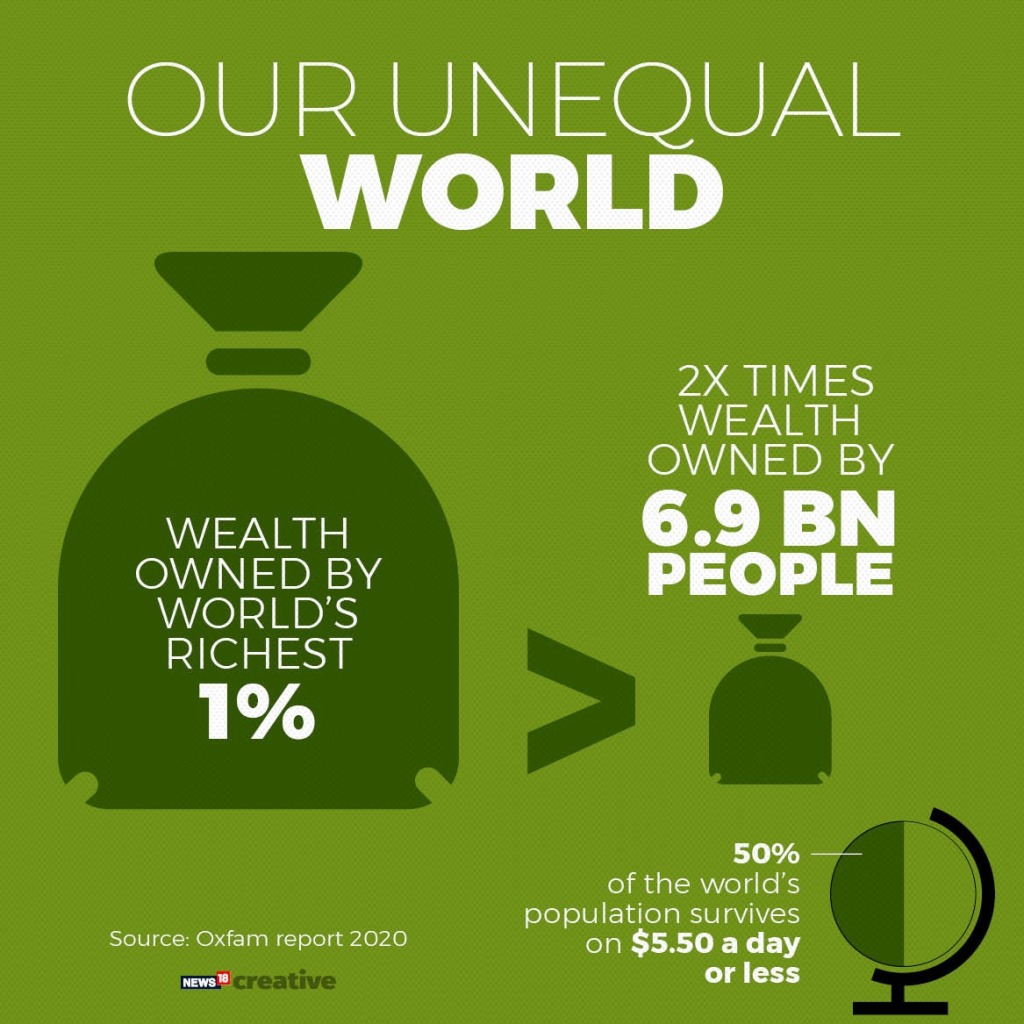Pandemic led widening inequalities
by Jajwalya Ambani

India experienced one of the most stringent and earliest lockdown, but now India and other nation are recovering from devastating COVID-19 pandemic. Recovery is uneven within and among other countries. Rich were able to escape pandemic by being isolated and doing “Work from home”, fulfilling their hobbies, making Dalgona coffee ,completing task given by our Prime Minister whereas lockdown brought hunger, unemployment, migration for the Economic weak section of the country. Informal sector worst hit due to lockdown as it made up 75% of the 122 million jobs lost because they have less opportunities for work for home and suffered more job losses compared to formal sector. Woman unemployment is now rose from 15% to 18% during covid 19 lockdowns and can result loss of 8% GDP. Education is worst hit, only 3% of poor have access to computer and only 9% have access to internet due to this India is facing worst digital divide and also disruption in schooling risk doubling the rate of out of school especially poor.
The wealth of Indian billionaires increased by 35% during the lockdown and by 90% since 2009 to USD 422.9 billion, ranking India sixth in the world after the USA, China, Germany, Russia and France. According to Oxfam report 1000 richest people worldwide recovered their losses within nine months while poorest will take a decade to come pre covid standing. . Inequality in India has risen to levels last seen when it was colonised. 20 crores people is now fall in Below Poverty Line category (BPL).Nearly 120 million people asked for MGNREGA, the total demand is 53% high this year were India’s top 50 companies increased their market nearly ₨3,00,000crores during this year.
An unskilled worker in India would take three years to earn what the country’s richest person earned in one second last year, the report calculates. The worsening inequality in income and opportunities impacts some sections disproportionately due to discrimination based on gender, caste and other factors.
While the Indian government barely taxes its wealthiest citizens, its spending on public healthcare ranks among the lowest in the world. In the place of a well-funded health service, it has promoted an increasingly powerful commercial health sector.
A decent healthcare is a luxury only available to those who have the money to pay for it. While the country is a top destination for medical tourism, the poorest Indian states have infant mortality rates higher than those in sub-Saharan Africa. India accounts for 17% of global maternal deaths, and 21% of deaths among children below five years
There is urgent need for taxation on corporates and on rich individuals and use that funds to invest on public Health care and education. Governments public investment will take time to translate into jobs and income for large number for labour workforce .
India needs to grow first before it can distribute. Otherwise, it can get stuck in a low-income equilibrium.
.


